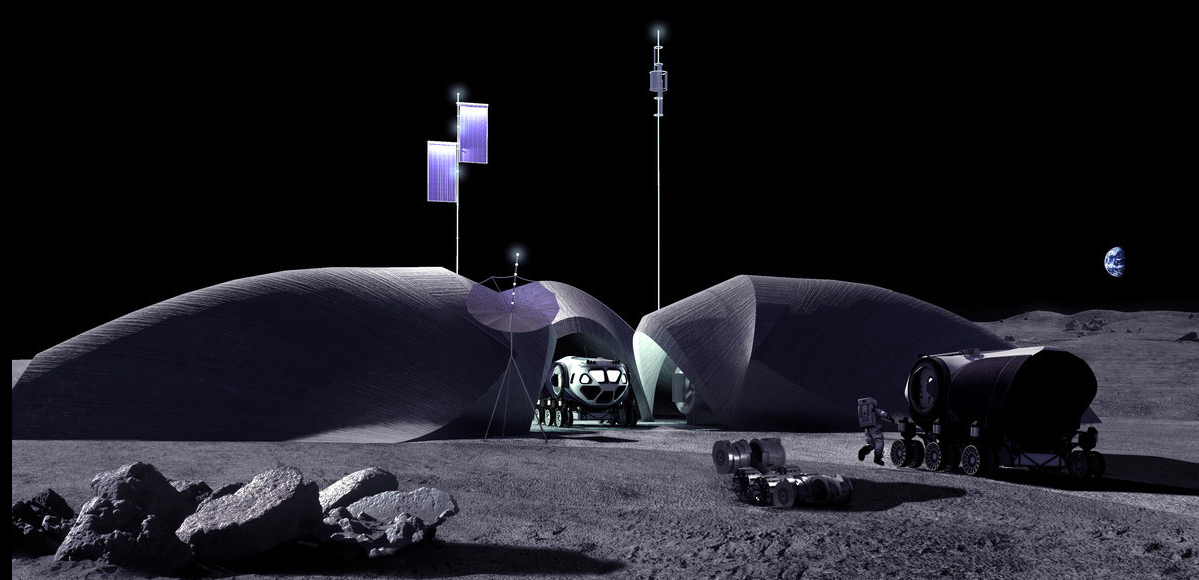
Space architecture and technology firm AI SpaceFactory has announced its designs for LINA, the first lunar outpost developed in collaboration with NASA Kennedy Space Center (KSC).
The design and testing of LINA is part of NASA’s 2020 Announcement of Collaboration Opportunity (ACO) project Relevant Environment Additive Construction Technology (REACT), through which AI SpaceFactory and NASA KSC are advancing the technologies and materials that SpaceFactory created for NASA’s 3D Printed Habitat Challenge. Through the ACO, AI SpaceFactory’s original polymer, made with a Martian regolith (soil) simulant, was modified to use lunar regolith, and both its material composite and mechanical extruder will be tested in a NASA vacuum chamber that simulates the environmental conditions on the Moon. The results will inform a sustainable 3D printing system capable of constructing large structures on the Moon’s surface – with which AI SpaceFactory plans to ultimately use to print LINA.
“Our Mars habitat prototype MARSHA proved that 3D printing with a polymer composite was a strong solution for habitation off-world,” said AI SpaceFactory CEO David Malott. “Developing LINA and printing in an environment that is void of atmospheric pressures or weather systems advances that technology through a new context, with new and more precise variables.”
LINA is designed to be constructed by autonomous robots on the south pole of the Moon near the Shackleton crater, where near continuous sunlight on the crater’s peaks could allow for solar power, while perpetual shadow on the crater’s interior would allow harvesting of water ice. Its 3D printed Romanesque arches, which can withstand high compressive loads with minimal material, would be topped with 2.7 metres of lunar regolith to provide the maximum possible protection from radiation, micrometeorites, lunar seismic activity (moonquakes) and extreme thermal swings. The strength of AI SpaceFactory's polymer composite will support LINA's geometry for a sustainable and long-lasting structure that could support long-term habitation and further travel to more planets.
AI SpaceFactory is one of 17 companies selected by NASA to participate in the 2020 ACO – a group that includes Blue Origin and SpaceX. The project’s new lunar vacuum chamber, which will reside at NASA KSC Granular Mechanics and Regolith Operations (GMRO) Laboratory, has been built and fitted with AI SpaceFactory’s 3D printing extruder and mounted on a gantry designed and manufactured by NASA. The collaboration's first vacuum prints are expected later this year.

















